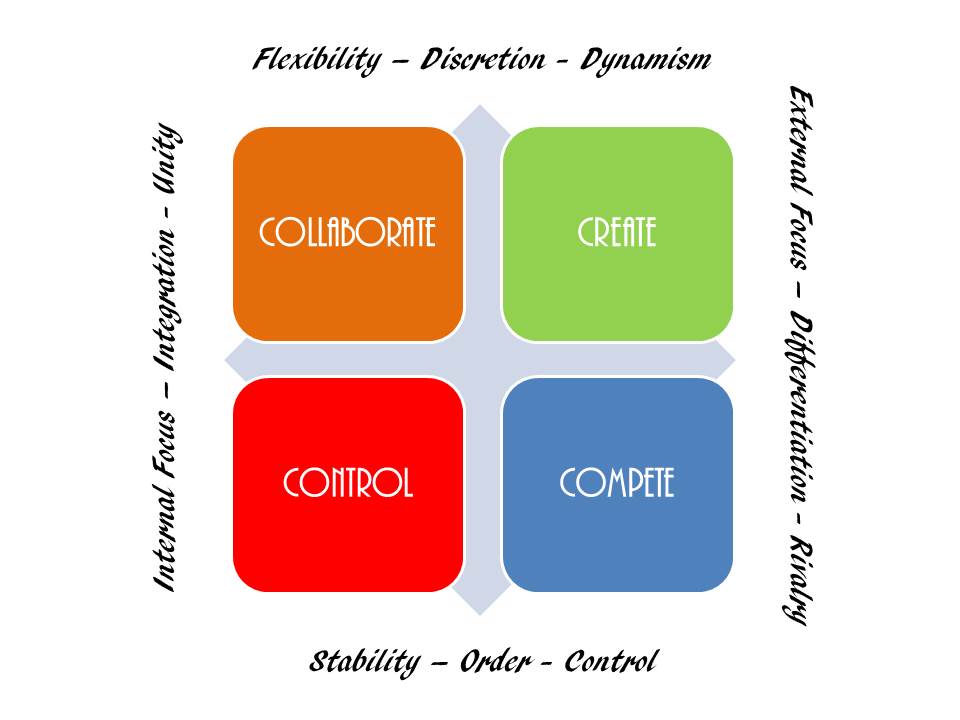
In the diagram above, Robert Quinn and John Rohrbaugh put culture on a two-dimensional plane. The vertical axis represents Structure (control vs. flexibility) and the horizontal axis represents Focus (internal vs. external). Control organizations value standardization and a well-defined, decision-making process. They focus inwardly on their people and processes. Collaborate organizations are more familial and are comfortable with flexibility. Compete organizations differ from their counterpart (Control) by focusing externally. They want great products that can be differentiated in the marketplace. Create organizations are highly flexible and externally focused. One would probably not find a Control culture comfortable with telecommuting. Nor would you find an Compete culture sitting in a room going through a multi-day strategic planning session just to get buy-in from the entire team–like you might in a Collaborate culture.
Haworth, a designer and manufacturer of office furniture, uses Quinn and Rohrbaugh’s research regarding culture (PDF
here) to design interior spaces. You don’t have to be an interior designer, though, to appreciate the simplicity and value of this model. I wrote in an
earlier post that corporate goals must align with the culture of the organization. When you don’t align goals with culture you set yourself and your team up for failure. Misalignment will cause stress and conflict that consumes energy and holds you back from attaining goals–both personal and organizational. We also know from research that hiring decisions that don’t take into account culture pose significant difficulties for the new employee as well as the organization.
What type of culture do you have–Control, Collaborate, Compete, or Create?
It’s okay if you fall somewhere in between two of these types of cultures (flexing across one dimension–vertical or horizontal), but if you’re unable to locate your culture definitively in this model, you run the risk of being pulled in too many directions at once (of being
drawn and quartered).
Know where your organization is on this diagram, so that you can set clear and purposeful goals, and hire people who fit your culture.

